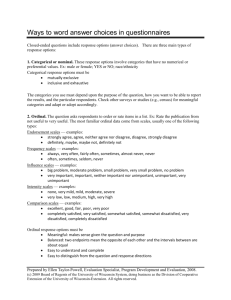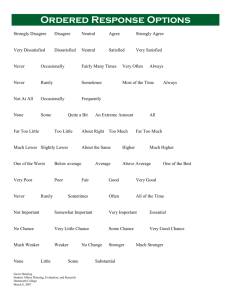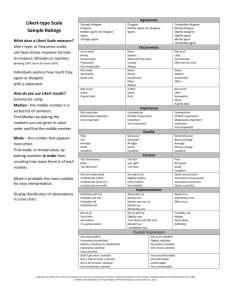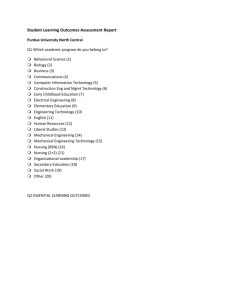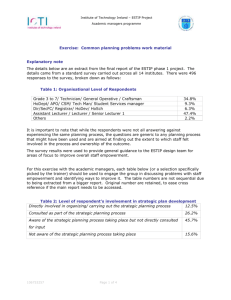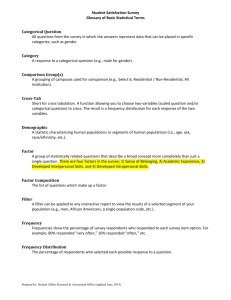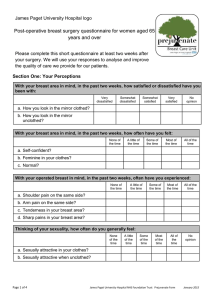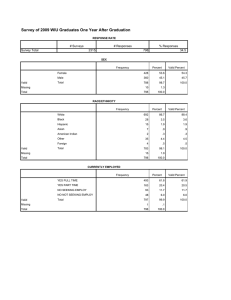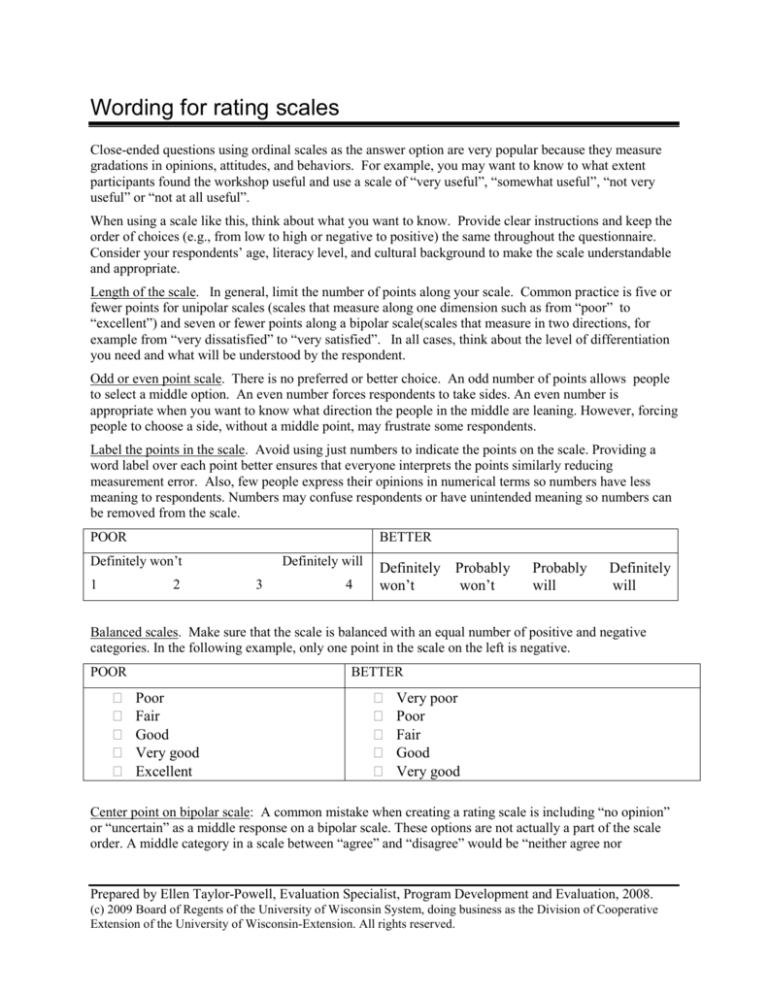
Wording for rating scales
Close-ended questions using ordinal scales as the answer option are very popular because they measure
gradations in opinions, attitudes, and behaviors. For example, you may want to know to what extent
participants found the workshop useful and use a scale of “very useful”, “somewhat useful”, “not very
useful” or “not at all useful”.
When using a scale like this, think about what you want to know. Provide clear instructions and keep the
order of choices (e.g., from low to high or negative to positive) the same throughout the questionnaire.
Consider your respondents’ age, literacy level, and cultural background to make the scale understandable
and appropriate.
Length of the scale. In general, limit the number of points along your scale. Common practice is five or
fewer points for unipolar scales (scales that measure along one dimension such as from “poor” to
“excellent”) and seven or fewer points along a bipolar scale(scales that measure in two directions, for
example from “very dissatisfied” to “very satisfied”. In all cases, think about the level of differentiation
you need and what will be understood by the respondent.
Odd or even point scale. There is no preferred or better choice. An odd number of points allows people
to select a middle option. An even number forces respondents to take sides. An even number is
appropriate when you want to know what direction the people in the middle are leaning. However, forcing
people to choose a side, without a middle point, may frustrate some respondents.
Label the points in the scale. Avoid using just numbers to indicate the points on the scale. Providing a
word label over each point better ensures that everyone interprets the points similarly reducing
measurement error. Also, few people express their opinions in numerical terms so numbers have less
meaning to respondents. Numbers may confuse respondents or have unintended meaning so numbers can
be removed from the scale.
POOR
BETTER
Definitely won’t
1
2
Definitely will
3
4
Definitely Probably
won’t
won’t
Probably
will
Definitely
will
Balanced scales. Make sure that the scale is balanced with an equal number of positive and negative
categories. In the following example, only one point in the scale on the left is negative.
POOR
BETTER
Poor
Fair
Good
Very good
Excellent
Very poor
Poor
Fair
Good
Very good
Center point on bipolar scale: A common mistake when creating a rating scale is including “no opinion”
or “uncertain” as a middle response on a bipolar scale. These options are not actually a part of the scale
order. A middle category in a scale between “agree” and “disagree” would be “neither agree nor
Prepared by Ellen Taylor-Powell, Evaluation Specialist, Program Development and Evaluation, 2008.
(c) 2009 Board of Regents of the University of Wisconsin System, doing business as the Division of Cooperative
Extension of the University of Wisconsin-Extension. All rights reserved.
disagree.” Options such as: “no opinion,” “not sure,” “undecided”, “don’t know,” or, “not applicable are
placed off the scale, in a separate space.
POOR
BETTER
Very satisfied
Somewhat satisfied
No opinion
Somewhat dissatisfied
Very dissatisfied
Very satisfied
Somewhat satisfied
Neither satisfied nor dissatisfied
Somewhat dissatisfied
Very dissatisfied
Don’t know
No opinion
Match response to question. Be as direct and specific as possible, focusing the response options on what
you want to measure. In the following example, we want to measure usefulness of information provided
at a workshop. Phrasing the response options on an ‘agree-disagree’ scale requires the respondent to first
decide how useful the information was and then whether they agree or disagree that the workshop
provided useful information. This is burdensome and confusing for respondents.
POOR
BETTER
To what extent do you agree or disagree that
the workshop provided useful information?
How useful do you think the information is that the
workshop provided?
Strongly agree
Agree
Disagree
Strongly disagree
Very useful
Somewhat useful
Not very useful
Not at all useful
Keep labels consistent. Finally, the labels you use in the scale need to refer to the same thing. In the
example below, the scale in the left column includes various concepts- worthy of time, interest level,
quality. The example in the right column includes only interest level, making a better response scale.
What was your reaction to the session? (Please check one response.)
POOR
BETTER
____ not worth my time
____ interesting
____ could have been better
____ excellent
____ terrific
____ not at all interesting
____slightly interesting
____moderately interesting
____ very interesting
____extremely interesting
Key resource: Dillman, D., Smyth, J., Christian, L. 2009. Internet, Mail, and Mixed-Mode Surveys: The
Tailored Design Method. 3rd Edition. Hoboken, NJ: John Wiley & Sons, Inc.
Prepared by Ellen Taylor-Powell, Evaluation Specialist, Program Development and Evaluation, 2008.
(c) 2009 Board of Regents of the University of Wisconsin System, doing business as the Division of Cooperative
Extension of the University of Wisconsin-Extension. All rights reserved.

